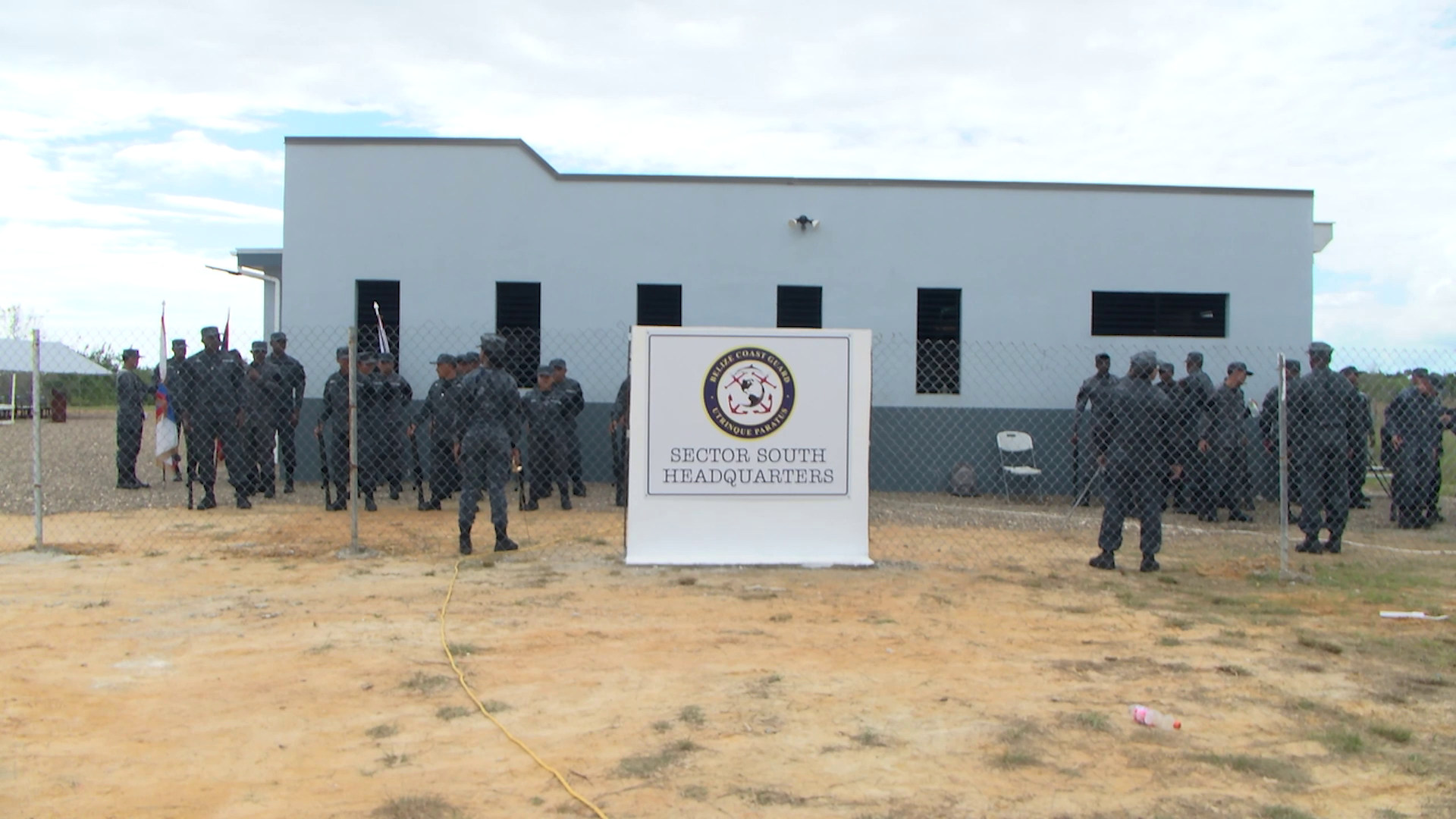Today, the Belize Coast Guard celebrated its nineteenth anniversary by opening a brand-new station in Big Creek Village. This new facility will enhance their patrols along the southern sea and waterways. Since its inception in 2005, the Coast Guard has continually expanded, adding more boats, personnel, and training programs, with stations now spread across the country. News Five’s Marion Ali was at the ceremony and filed this report.
The Belize Coast Guard marked its nineteenth anniversary today by opening a brand-new station in Big Creek. This state-of-the-art facility enhances security for Belize’s southern waters and provides private security to the nearby Big Creek Port through a joint venture. Commandant Rear Admiral Elton Bennett shared more details about this exciting development.
Rear Admiral Elton Bennett, Commandant, Belize Coast Guard
“This project here is a joint venture This project here is a joint venture with Belize Coast Guard, the government of Belize and the port of Big Creek. So they leased us this property, two acres property, for us to be able to collaborate better along with them. So our mere presence here we’ll need some of the demands that they have in place. Those international regulations, such as the International Ships and Ports Security Code, that they must have some elements of security system within the port for it to meet international standards. By the Coast Guard being here and for us to be able to provide water side security and water side patrols, that in turn adds to their security credibility.”
Marion Ali
“Because you have to give so much of your service or time to that private entity, would it take away from, if in the case there is an emergency elsewhere in the area?”
“Very good question. What we’ve done is to develop a specific station that is called station Big Creek that is dedicated to supporting the port in different areas more than security, but for boarding, immigration support, customs support, and police support. So there’s a dedicated team for that. And then all the other Coast Guard functions continue to be conducted out at sea. So it’s a very necessary thing for the Belize Coast Guard to participate in this because the port is a vital infrastructure to the nation. All our training are international professional standards training. So, I have all the confidence that these sailors, these seamen who are here, they know their job, they’re always on alert, so whatever call they would get, they would be able to respond very quickly.”
Florencio Marin Jr.
“These improvements aim to better equip seafarers for any situation that may arise. And we also have to do with other improvements in the bases. I mean, even the current base right on the main base still has a lot of improvements we need to do. We’re trying to improve our personnel as you’ve heard the admiral um I’ve spoken in his speech. Alright, we have a lot of plans that is ongoing and developing. Because you’ve noticed the threat keeps changing and we have to be able to be able to be prepared for them. Now, I mean, we’ve noticed we’ve had a significant decrease in the air traffic of interests. Significant decrease. But there’s also still the threat out there in our maritime waters. The Admiral reported what happened with Guatemala, Honduras and Mexico. So we need to be prepared if at any point these things start coming into our waters.”
Stann Creek West Area Representative Rodwell Ferguson believes the new facility will boost security and lighten some of the responsibilities currently on his shoulders.
Rodwell Ferguson, Area Representative, Stann Creek West
“I would get the call from different organizations, different communities, and say this is happening in my community illegally. What I do, I call whatever uniform forces that should respond, either the police or the BDF or the Coast Guard. to respond to a particular issue. But I try not to interfere, it’s their job, I just pass on the message to them, and they do what they have to do. With this facility, especially with the port nearby, and the open sea, I believe this will definitely mitigate the amount of activities on the sea, and I feel that this is a potential area to make sure the entire country has some safe activities going on.”
Bennett says the facility was built at a cost of around one million dollars and was outfitted for another half a million dollars. Marion Ali for News Five.
